Where to find this song – August and Everything
After track #3
Release Date – September 1993
Adam Duritz, frontman and lyrical genius, wrote this song about a true story of him and a friend hanging out in a bar. Duritz wrote this song on a napkin at the bar, and actually went up and sang a few nights later at the same bar on karaoke night. Ironically, the words he had written made perfect sense with the house band that was performing that night. He simply told them to play a few chords, and the song came forth. Not too many people can say that they wrote a song before they even knew it.
This song is very simple to play, as long as you understand chords and how to use them in progressions.
Verse Riff
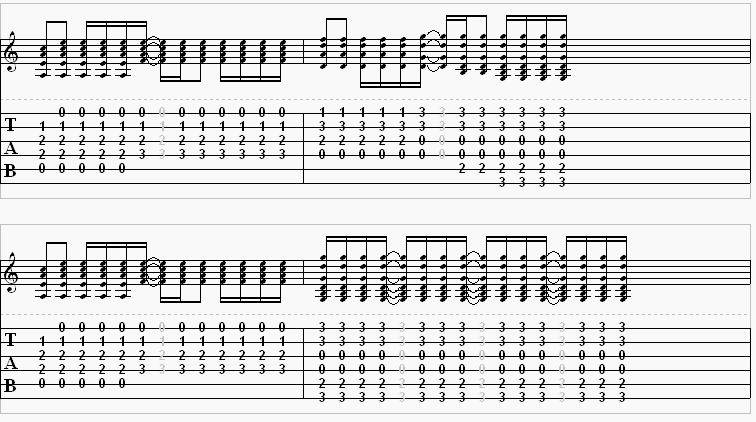
How To Play It
To begin this song, notice that you will be using the following chords: Am, Fmaj7, Dm, and G. Those are very simple chords, and are a requisite when learning how to play guitar. No one should go without these chords, because QUITE a few songs are based around these notes. Ok, remember there are two options here. The first part will tell you what chords to use, and included here is the diagram for all of these chords.
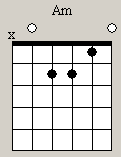
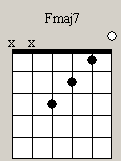
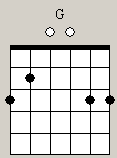
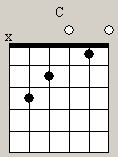
You will be playing four chords total for the first two measures of this riff.
The order goes as such:
Measure ONE – Am, F Measure TWO – Dm, G
You will be playing THREE chords total for the third and fourth measures here. Below are the breakdowns that show which chord you will be playing for a longer period.
Measure THREE – Am, F Measure FOUR – G ( this will be the measure that the G is played throughout)
Part 1

Begin with your 1st finger on the “B” string on the first fret, your 2nd finger on the “D” string on the second fret, and your 3rd finger on the “G” string on the second fret. Allow the “A” string and the “high E” string to remain open. Play that five times. That is an Am.
Next place your 1st finger on the first fret of the “B” string, your 2nd finger on the second fret of the “G” string, and your 3rd finger on the second fret of the “D” string. Play that about eight times. That is an F.
For the next measure, place your 1st finger on the “high E” string on the first fret, your 2nd finger on the second fret of the “G” string, and your 3rd finger on the second fret of the “B” string. Allow the “D” string to remain open. Play that five times. That is a Dm. Notice here that it asks you to play the “high E” and the “B” string on the third fret. What you ACTUALLY will be doing is playing a G chord, and just not hitting all of the strings to actually let that chord ring, so lets skip the explanation on how to play this. Just play the G chord. To play the G chord, you will need to place your 1st finger on the “A” string on the second fret, your 2nd finger on the third fret of the “low E” string, your 3rd finger on the third fret of the “B” string, and your 4th finger on the third fret of the “high E” string. That is a G. Play that about six times. If you want to get REALLY technical then you can, but with a song like this there is no need to make it sound like it shows on the paper since the musicians play this song in so many ways.
Part 2

Begin the third measure playing the same thing that you played in the first measure at the beginning. That is an Am. You will play this the same number of times, as will you do the same with the second chord, the F chord. Notice that the first and third measures are completely identical!
For the last measure, all you need to do is play the last notes of the second measure. That is a G. You will allow this to be the only chord played in this measure. See, once you see how the fundamentals work, it is much easier to judge the timing! Have fun with this one, and try both versions to see the most comfortable way to play it. Even if you learn how to play the chords using the diagram instead of the tablature, you will still love trying to figure
out what chord is what using both of them especially when you are lost on the tablature or lost on the diagram. This song is a good one to utilize learning both ways to read because it is so easy to play!
